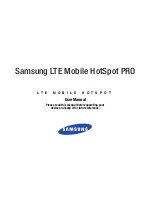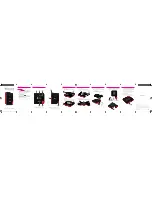
Deployment
Trango Broadband Wireless — User Manual M2400S Rev A
Page
30
Section 7 Deployment
Once you are familiar with the basic operation of the radios, you are ready for deployment in the field. The deployment
process consists of the following steps:
•
Site Selection
•
Site Survey
•
Channel Planning
•
SU Antenna Alignment
•
Link Management Commands
Site Selection
Proper site selection for your AP will help ensure a successful deployment. Site selection will depend on a wide variety
of factors, but from the radio’s performance standpoint consider the following:
•
Path from AP to SU should provide as few obstructions as possible. It is advisable to place the AP as high as
possible on a tall building or tower.
•
Ethernet cable is limited to 300 feet from Ethernet device (router, switch) to radio.
•
Radios require grounding for optimal performance.
•
AP provides sector coverage of 60 degrees azimuth and 18 degrees elevation
•
Consider nearby sources of interference that could degrade performance of radio. Mount radios as far from
sources of interference as possible.
•
Perform a site survey to determine noise levels and the relative clarity of channels at the chosen installation
location.
Site Survey
Both the AP and SU provide a powerful on-board site survey tool. This tool will tell you if there is interference present in
the 2.4 GHz ISM band.
Command:
survey <time> <antenna>
In order to use the survey command, the radio must be in Opmode “OFF.” The survey can be performed for up to 10
seconds per channel (incrementing by 5 MHz). The test can be run for either the (h) horizontal polarization, (v) vertical
polarization, or (e) external antenna.
Prior to performing the site survey, place the radio in the installation spot, and aim the radio in the desired direction.
The results of the test will provide you with a listing of each channel in the band, the average signal received, and the
maximum signal received during the survey period.
In general you will be looking for frequencies with interference signal strength of –85 dBm or lower. If interference is
present on various channels, it is recommended that you chose clean channels or alternate polarizations for your
deployment. If it is not possible to use a clean channel/polarization combination, there are various methods available to
mitigate the affects of interference. These methods include the use of the RFRX THRESHOLD settings, the use of
external shields, and/or external narrower beam antennas.
















































